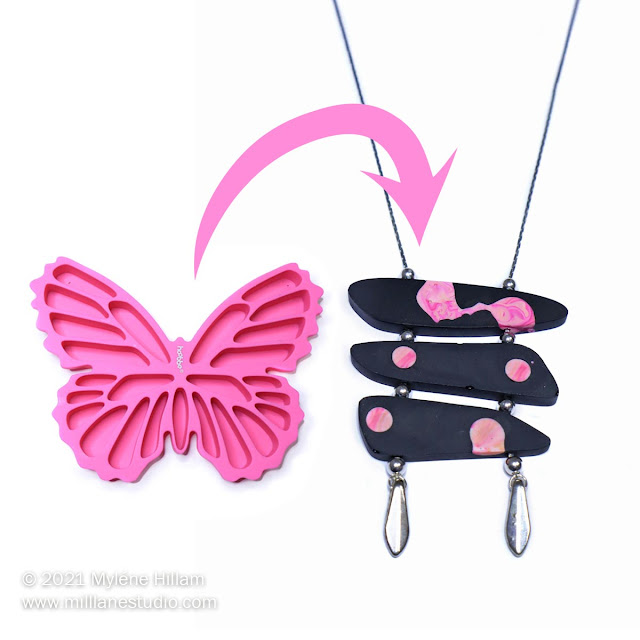There are a ton of different moulds made specifically for resin. But if you want your resin pieces to stand out from the crowd, then look to the kitchen and to other crafts that use moulds for some unusual mould ideas.
Moulds are made of all sorts of different materials and whilst not all of them are suitable for resin, many of them are. So what should you look for in a mould?
A resin mould needs to be 4 things:
- flexible
- non-porous
- non-stick
- able to take the heat generated by curing resin
Moulds that don't have these 4 characteristics won't be successful.
Because resin cures hard, rigid moulds just won't work. If you can't flex the mould, you won't be able to remove the resin casting from it.
Likewise for moulds made of porous materials: the resin will seep into the mould surface and bond to it permanently. Plaster of Paris and wooden moulds are good examples of moulds that are both rigid and porous and simply not suitable.
The material that a mould is made from needs to be a surface that resin doesn't stick to. Silicone and polypropylene are prime examples of non-stick surfaces for resin.
Plastic candy and chocolate moulds made from thin plastic generally can't take the prolonged heat that curing resin generates, even though they can cope with the short term heat of boiled candy and melted chocolate.
So these are moulds that don't work. But there are plenty of moulds that have the 4 essential properties in the list above. Most will be made of silicone. But keep an eye out for Polypropylene plastic (PP) moulds too.
And that means that there are moulds from lots of other crafts that are worth looking at:
soap moulds (both plastic and silicone)
sugarcraft/cake decorating moulds
silicone bakeware
chocolate moulds (silicone)
ice cube trays
plastic plaster moulds
And then there are some less obvious options: kitchen and household items that don't quite fit the criteria for moulds but nonetheless, give you some unexpected, creative options. Take a look at these two silicone gadgets and how you can use them to make totally original resin jewellery:
Silicone Trivets
Can you believe this wrap bracelet was made by filling the square cavities of a silicone trivet with resin?
Learn how to make this bright and fun resin wrap bracelet here.
Silicone Drink Markers
Get the tutorial for this big, bold resin choker-style necklace here.
And what about using a domed dessert mould like this one:
On top of that, there are things you probably hadn't thought of, such as the plastic blister packaging that protects many of the items you buy. The smooth, glossy cavity of this type of plastic can work well as a single-use mould.
Using these less obvious moulds gives you an opportunity to create totally unique pieces that are guaranteed to produce interesting pieces.
But the one type of mould I get asked about all the time is silicone ice cube trays. Can they be used for resin?
The answer is most definitely, YES!
There are so many fun shapes in silicone ice trays and they're generally small enough to use as keychains and jewellery charms.
Generic shapes are quite inexpensive. Licensed designs are more expensive and you have to keep in mind that those shapes are protected by copyright so they can't be used for pieces you want to sell.
So if you've found a unique item that you think might work as a mould but you want to make sure it's suitable BEFORE you fill it with resin, you can do a simple spot test on the outside of the mould.
If the resin sticks after it's cured, then it's not suitable. But if it peels away easily, then you're good to go!
And one more thing before I go: Once you've filled a food mould with resin, it should be kept as a resin-only mould and not be used for food again.
Pin This Idea!

Subscribe to my email list and learn how to resin like an expert.










